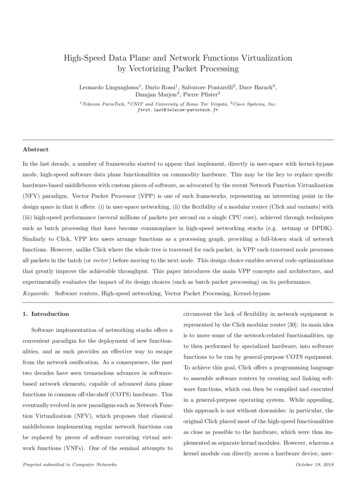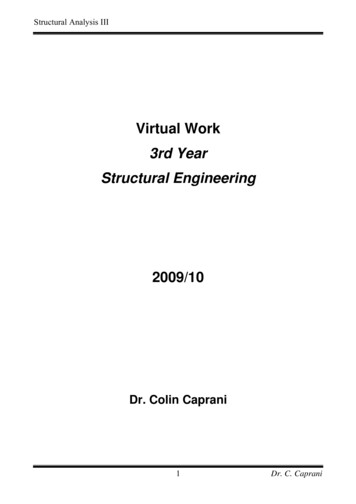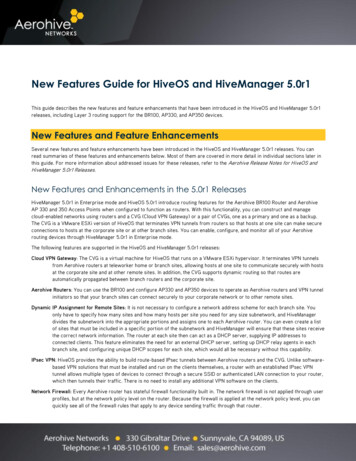
Transcription
Oracle CommunicationsDiameter Signaling RouterVirtual Network Functions Manager Installation and UserGuideRelease 8.3E93569-02December 2018
Virtual Network Functions Manager Installation and User GuideOracle Communications Diameter Signaling Router VNFM Installation and User Guide, Release 8.3.Copyright 2010, 2018 Oracle and/or its affiliates. All rights reserved.This software and related documentation are provided under a license agreement containing restrictions on use and disclosureand are protected by intellectual property laws. Except as expressly permitted in your license agreement or allowed by law, youmay not use, copy, reproduce, translate, broadcast, modify, license, transmit, distribute, exhibit, perform, publish, or display anypart, in any form, or by any means. Reverse engineering, disassembly, or decompilation of this software, unless required by lawfor interoperability, is prohibited.The information contained herein is subject to change without notice and is not warranted to be error-free. If you find any errors,please report them to us in writing.If this is software or related documentation that is delivered to the U.S. Government or anyone licensing it on behalf of the U.S.Government, then the following notice is applicable:U.S. GOVERNMENT END USERS: Oracle programs, including any operating system, integrated software, any programsinstalled on the hardware, and/or documentation, delivered to U.S. Government end users are "commercial computer software"pursuant to the applicable Federal Acquisition Regulation and agency-specific supplemental regulations. As such, use,duplication, disclosure, modification, and adaptation of the programs, including any operating system, integrated software, anyprograms installed on the hardware, and/or documentation, shall be subject to license terms and license restrictions applicable tothe programs. No other rights are granted to the U.S. Government.This software or hardware is developed for general use in a variety of information management applications. It is not developedor intended for use in any inherently dangerous applications, including applications that may create a risk of personal injury. Ifyou use this software or hardware in dangerous applications, then you shall be responsible to take all appropriate fail-safe,backup, redundancy, and other measures to ensure its safe use. Oracle Corporation and its affiliates disclaim any liability forany damages caused by use of this software or hardware in dangerous applications.Oracle and Java are registered trademarks of Oracle and/or its affiliates. Other names may be trademarks of their respectiveowners.Intel and Intel Xeon are trademarks or registered trademarks of Intel Corporation. All SPARC trademarks are used under licenseand are trademarks or registered trademarks of SPARC International, Inc. AMD, Opteron, the AMD logo, and the AMD Opteronlogo are trademarks or registered trademarks of Advanced Micro Devices. UNIX is a registered trademark of The Open Group.This software or hardware and documentation may provide access to or information about content, products, and services fromthird parties. Oracle Corporation and its affiliates are not responsible for and expressly disclaim all warranties of any kind withrespect to third-party content, products, and services unless otherwise set forth in an applicable agreement between you andOracle. Oracle Corporation and its affiliates will not be responsible for any loss, costs, or damages incurred due to your accessto or use of third-party content, products, or services, except as set forth in an applicable agreement between you and Oracle.CAUTION: Use only the Upgrade procedure included in the Upgrade Kit.Before upgrading any system, please access My Oracle Support (MOS) (https://support.oracle.com) and review any TechnicalService Bulletins (TSBs) that relate to this upgrade.My Oracle Support (MOS) (https://support.oracle.com) is your initial point of contact for all product support and training needs. Arepresentative at Customer Access Support (CAS) can assist you with MOS registration.Call the CAS main number at 1-800-223-1711 (toll-free in the US), or call the Oracle Support hotline for your local country fromthe list at l.See more information on My Oracle Support (MOS) in Appendix A.Page 2E93569-02
Virtual Network Functions Manager Installation and User GuideTable of Contents1. Introduction . 41.1 References . 41.2 Acronyms . 41.3 Terminology . 52. Virtual Network Functions Manager Overview . 53. Advantage of Using VNFM . 64. DSR VNFM Lifecycle Management Interfaces . 75. DSR VNFM OpenStack Prerequisites . 76. Install and Configure the DSR VNFM . 96.1 Access DSR VNFM Using the REST Interface . 106.2 Supported VNF's by the DSR VNFM . 117. Deploying DSR VNFs . 117.1 Create a VNF Instance . 117.2 Query VNF Instance . 137.2.1 Query Individual VNF Instance. 147.2.2 Query All VNF Instance . 157.3 Instantiate the Network OAM VNF . 167.4 Instantiate the First Signaling VNF . 187.4.1 Determine the NOAM XMI Resource IDs . 207.5 Instantiate More Signaling VNFs . 247.6 Instantiate the APIGW VNF . 247.7 Instantiate the IDIH VNF . 267.8 Instantiate the SPF VNF . 297.9 Import HTTPS/SSL Certificate into VNFM . 317.9.1 Recombine Existing PEM Keys and Certificates into VNFM . 317.9.2 Copy Created Certificate (vnfm default.jks) into VNFM . 327.9.3 VNFM Self Signed Certificate Generation . 327.10 Terminating a VNF . 338. Discover Stack . 34Appendix A.My Oracle Support (MOS) . 35List of TablesTable 1. Acronyms . 4Table 2. Terminology . 5Table 3. Parameters and Definitions . 10Page 3E93569-02
Virtual Network Functions Manager Installation and User GuideTable 4. Supported VNFs and VMs . 11Table 5. Parameters and Definitions . 13Table 6. Parameters and Definitions . 18Table 7. Supported Instantiation Levels for DSR Signaling VNF. 19Table 8. Parameters and Definitions . 23Table 9. Supported Instantiation levels for DSR APIGW VNF . 24Table 10. Parameters and Definitions . 26Table 11. Parameters and Definitions . 28Table 12. Parameters and Definitions . 30List of FiguresFigure 1. DSR VNFM Manager . 6Figure 2. VNF Create Instance Request . 11Figure 3. Query VNF Instance . 13Figure 4. VNF Instantiate Request . 191. IntroductionThis document defines and describes the DSR Virtual Network Functions Manager (DSR VNFM). DSRVNFM is an application that helps to deploy virtual DSRs quickly by automating the entire deploymentprocess and making it ready to use in the shortest possible time.The VNFM is responsible for the lifecycle management of virtual network functions (VNFs) under thecontrol of the network function virtualization orchestrator (NFVO).1.1 References DSR Cloud Benchmarking Guide Or-VNFm Interface defined by ETSI NFV-SOL 003 Import a Swagger Specification/Swagger UI OpenStack prerequisites1.2 AcronymsAn alphabetized list of acronyms used in the document.Table 1. AcronymsPage 4AcronymDefinitionAPIGWApplication Program Interface GatewayDA-MPDiameter Agent Message ProcessorDBDatabaseDSRDiameter Signaling RouterE93569-02
Virtual Network Functions Manager Installation and User GuideAcronymDefinitionETSIEuropean Telecommunications Standards InstituteGUIGraphical User InterfaceHAHigh AvailabilityIPInternet ProtocolIDIHIntegrated Diameter Intelligence HubMPMessage Processing or Message ProcessorNFVONetwork Functions Virtualization OrchestratorNOAMNetwork Operations and MaintenanceOAMOperations, Administration, and MaintenanceRESTRepresentational State TransferSOAMSystem Operations and MaintenanceSTP-MPSignaling Transfer Point Message ProcessorUDRUsage Detail RecordsUIUser InterfaceNFVONetwork Function Virtualization OrchestratorVDSRVirtual Diameter Signaling RouterVMVirtual ManagerVNFMVirtual Network Functions ManagerVNFVirtual Network FunctionsXMIExternal Management Interface1.3 TerminologyThis section describes terminology as it is used within this document.Table 2. TerminologyTermDefinitionOpenStack controllerOpenStack controller controls the selected OpenStack instance.PostmanA tool for creating REST requests.Swagger UISwagger UI allows the users to interact with the API resources.VNF instancesVNF instances are represented by the resources. Using this resource, theclient can create individual VNF instance resources, and to query VNFinstances.2. Virtual Network Functions Manager OverviewA VNFM automates lifecycle operations for VNFs. Since, each VNF is managed independently, to deploya DSR it requires creating and instantiating at least two VNFs (one for the network OAM VNF and one forthe signaling VNF). Signaling VNFs can be instantiated any time after the network OAM has beeninstantiated.Page 5E93569-02
Virtual Network Functions Manager Installation and User GuideThe main objective of the DSR VNFM is to provide an ETSI-compliant VNFM. The VNFM would behelpful by: Automating lifecycle management (LCM) operations for DSR VNFs. Automation of these operationscan reduce their execution time. Providing a standardized interface to easily integrate with automation clients, especially ETSIcompliant NFVOs. The DSR VNFM provides a REST API that complies with ETSI NFV-SOL 003.The VNFM is also helpful in responding quickly to changing customer requirements and delivers solutionsfor those requirements in a very short time.The following figure illustrates the interaction between various components of DSR VNFM:Figure 1. DSR VNFM Manager3. Advantage of Using VNFMDeployment of Virtual DSR (VDSR) was performed using the following methods that required manualprocessing: VM creation and installation process HEAT Template based installation (HEAT templates require manual updates)The manual deployment consumes multiple hours to deploy a fully operational DSR and the HEATtemplate based installation needed more caution since it requires more manual work.Page 6E93569-02
Virtual Network Functions Manager Installation and User GuideUsing DSR VNFM, users can now deploy a fully operational DSR on OpenStack in less than 15 minutes!This application benefits both the internal and external customers by reducing operating expensesassociated with the implementation and by reducing human errors by eliminating manual intervention.4. DSR VNFM Lifecycle Management InterfacesThe ETSI NFV-SOL 003 VNFM Lifecycle Management interface includes multiple operations. Currentlythe DSR VNFM supports the following operations: Create VNF Identifier Instantiate VNF5. DSR VNFM OpenStack PrerequisitesTo use the DSR VNFM, you need the following:1. An OpenStack instance, Mitaka version.2. One OpenStack tenant per DSR Signaling VNF. The DSR network OAM VNF may share a tenantwith one of the signaling VNFs, if allowed.Note:In a production environment, each site would be geographically separate, and therefore on aseparate OpenStack instance. For lab setups, separate tenants in the same OpenStackinstance are sufficient.3. A DSR VM image in vmdk format, and named asDSR-8.3.0.0.0 83.15.0.vmdkWhere DSR-8.3.0.0.0 83.15.0.ova is the name of the OVA image that was delivered with theDSR build. This image must be accessible from every tenant where DSR VMs are deployed.4. DSR-specific flavors. VNFM assumes the following flavors are defined on each OpenStack tenant onwhich the DSR VMs are deployed: dsr.noam dsr.soam dsr.da dsr.ipfe dsr.sbr dsr.ss7 dsr.vstp spf dsrapigw.admin dsrapigw.app udr.noam appl-idih med-idih db-idihFor more details about flavor, see the DSR Cloud Benchmarking Guide.Page 7E93569-02
Virtual Network Functions Manager Installation and User Guide5. The specific flavor SPF is defined on each OpenStack tenant on which the SPF VMs are deployed.Note:The user must configure the firewall to allow traffic on required ports such as HTTPS, SCTP,ICMP, FTP, and so on. For example:In Security groups for vSTP, add the following rules to enable traffic on ICMP and SCTP:Page 8 For ICMP, select Rule as ALL ICMP. For SCTP, select Rule as Other Protocol and IP Protocol as 132.E93569-02
Virtual Network Functions Manager Installation and User Guide6. Install and Configure the DSR VNFMPerform the steps below to install and configure the DSR VNFM:1. Identify an OpenStack instance.Note:The identified OpenStack instance must meet the DSR VNFM OpenStack Prerequisites.2. Download the HEAT templates.Note:Download the DSR VNFM (Automatic release 2.0) HEAT templates to your local disk fromOHC.3. Upload the image file to OpenStack:a. From the OpenStack GUI, navigate to Projects Compute-Image.Note:The OpenStack GUI must be Mitaka version or higher.b. Click Create Image.c.In the Create Image box, perform these suggested options for the following fields:i.In the Image Source field, select Image File.ii.In the Image File field, select the VNFM 2.0 VM image. The VNFM Image can be obtainedfrom Oracle Software Delivery Cloud (OSDC) Portal. For example:DSRVNFM 2.0.0.0.0-20.6.0.qcow2The Minimum Disk and Minimum RAM fields can be left blank.d. The VNFM flavors must be provided with the appropriate values. For information about flavors,see the DSR Cloud Benchmarking Guide.4. Create the VNFM volume, using the OpenStack CLI:a. Create the VNFM volume to use as a part of the OpenStack. The VNFM 2.0 supports a volumewith the following specifications:Volume size 8 GBAvailability-zone novaFor example:openstack volume create --size 8 --availability-zone nova Name of thevolume Id The command displays the ID assigned to the newly created volume.b. Get the ID of the volume and update the dsrVnfmVolumeId parameter with it in thedsrVnfmParams.yaml file.5. Modify the input parameters.a. Edit the dsrVnfmParams.yaml HEAT template file.Note: The input parameters are given as key/value pairs. Only modify the values (the part to theright side of the colon). The formatting is very important in a YAML file. Do not remove any leading spaces or addany lines to the file.b. Edit the values as per the guidelines provided in Table 3.Page 9E93569-02
Virtual Network Functions Manager Installation and User GuideTable 3. Parameters and DefinitionsParameterValuedsrVnfmVmNameEnter a name for the VM. Alphanumeric plus "-" and " " are allowed.dsrVnfmImageEnter the name of the image uploaded in the previous step.dsrVnfmFlavorEnter the name of a flavor that is loaded onto OpenStack.xmiPublicNetworkEnter the name of a network that external clients can use to talk to the VNFM.ntpServerEnter the IP address of an NTP server with which the VNFM synchronizes thetime. The OpenStack controller hosts an NTP server so the IP address of theOpenStack controller is usually a good value.dsrVnfmAZEnter the availability zone to place the VNFM. The "nova" is the defaultavailability zone and is usually the right value.dsrVnfmVolumeIdEnter the volume name to use as persistence storage for the VNFM.c.Once editing is done, save the file.6. Deploy the VNFM. The VNFM can be deployed using either of these methods:a. Use the OpenStack CLI (recommended):Execute the following command:openstack stack create -t dsrVnfmVm.yaml -e dsrVnfmParams.yaml stackName Example for naming a stack:stack-nameb. Using the OpenStack GUI (optional):i.Navigate to Projects- Orchestration- Stacks.ii.Click Launch Stack.6.1 Access DSR VNFM Using the REST InterfaceThe DSR VNFM is accessible using a REST interface. There is no provision to access the RESTinterface through CLI, or GUI, however it can be accessed through a Swagger specification provided forthe REST interface. There are many other compatible interfaces that can be used with popular RESTtesting tools. Some of the most widely used tools that can be used with the REST testing tool are: Swagger UIWith the Swagger UI, a GUI can be generated from the Swagger specification.Swagger specifications can be found post VNFM installation at, (http:// VNFM IP :8080/docs/vnfm/). PostmanAnother popular tool for creating REST requests is the Postman tool. It is available as a standaloneapp and as a Chrome browser plugin. You can import a Swagger specification to allow Postman tounderstand the VNFM REST API in detail, which allows it to assist you while creating requests andinterpreting responses.Page 10E93569-02
Virtual Network Functions Manager Installation and User Guide6.2 Supported VNF's by the DSR VNFMTable 4. Supported VNFs and VMsSupported VNFsSupported VMsNOAMNOAM (Active/Standby)SignalingSOAM (Active/Standby), DA-MP, STP-MP, IPFE, SBR, UDRSPFSPFAPIGWDB Server ( Active/Standby ) , Admin Server, Application Server(s)IDIHAPP, MEDIATION, DB Server7. Deploying DSR VNFsPrerequisites: A virtual infrastructure satisfying the DSR VNFM OpenStack Prerequisites.7.1 Create a VNF InstanceThe following procedure creates the VNF Instance:1. Before a DSR VNF is instantiated, the user must first issue a request to create a VNF instance byusing the command create VNF instance.2. Creating a VNF instance informs the VNFM that a user has requested to instantiate a VNF at somepoint in the future.3. The VNFM returns a VNF ID that must be saved for future use while performing operations on thesame VNF.Note:Each VNF has its own VNF ID, so if it is required to create a DSR with two signaling VNFs,then issue the request to create a VNF instance three times, once for the network OAM VNF,and once for each signaling VNFs.For more information about the full list of all inputs and possible outputs of the create VNF instancecommand, see ETSI NFV-SOL 003, section 5.4.2.3.1, or the DSR VNFM Swagger specification.Swagger specifications can be found post VNFM installation at (http:// VNFM IP :8080/docs/vnfm/).The following image illustrates the VNF instance creation:Figure 2. VNF Create Instance RequestPage 11E93569-02
Virtual Network Functions Manager Installation and User GuideSample RequestCreate VNF instance request generated.Resource URL: http:// VNFM HOST IP :8080/vnfm/v1/vnf instancesAccept: application/jsonContent-Type: application/jsonExample for NOAM:{"vnfdId": "dsrNetworkOam","vnfInstanceName": "DemoNoam","vnfInstanceDescription": "DemoNoam "}Example for Signaling:{"vnfdId": "dsrSignaling","vnfInstanceName": "DemoSoam","vnfInstanceDescription": "Description"}Example for SPF:{"vnfdId": "SPF","vnfInstanceName": "DemoSPF","vnfInstanceDescription": "Description for SPF VNF"}Example for APIGW:{"vnfdId": "dsrApiGw","vnfInstanceName": "DemoApiGw","vnfInstanceDescription": "Description for APIGW VNF"}Example for IDIH:{"vnfdId": "dsrIdih","vnfInstanceName": "DemoIdih","vnfInstanceDescription": "Description for IDIH VNF"}Page 12E93569-02
Virtual Network Functions Manager Installation and User GuideSample Response201 CreatedCreate VNF Instance ResponseContent-Type: application/jsonResource URL: http:// myhost-IP :8080/vnfm/v1/vnf 6c30c60d2{"id": 3","vnfdId": "dsrNetworkOam","instantiationState": "NOT INSTANTIATED","vnfInstanceName": "DemoNoam"}Note:VNFM supports both the secured and the unsecured URL (HTTPS with port 8443 and HTTP withport 8080).Table 5 describes the parameters used for
An OpenStack instance, Mitaka version. 2. One OpenStack tenant per DSR Signaling VNF. The DSR network OAM VNF may share a tenant with one of the signaling VNFs, if allowed. Note: In a production environment, each site would be geographically separate, and therefore on a separate OpenStack instance. For lab setups, separate tenants in the same .
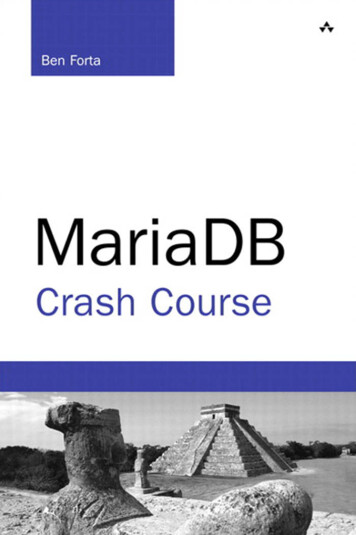
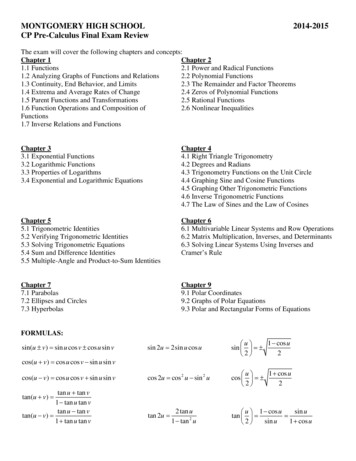
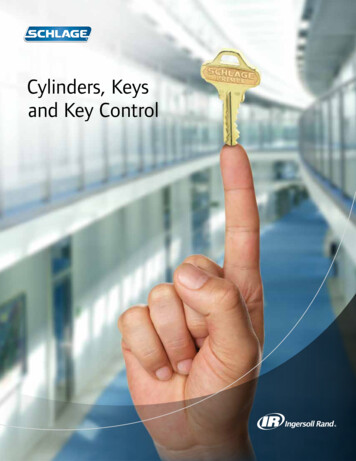
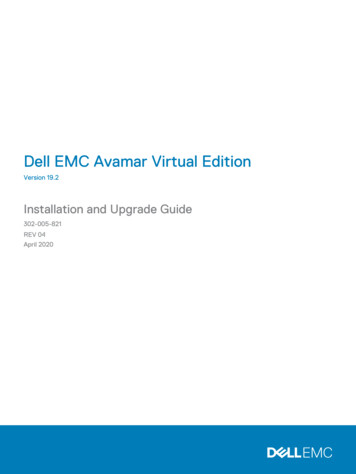

![[1]Oracle Enterprise Manager Cloud Control Basic Installation Guide .](/img/34/e22624.jpg)

